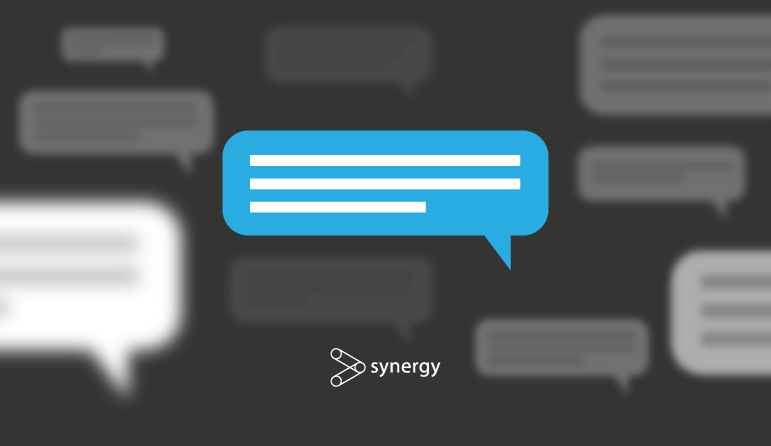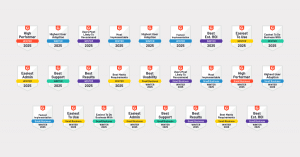Ever looked at your over-stuffed email inbox and thought, “372 unread emails? Yessssss!”… Nope, neither have we. Emails are like your partner’s visiting relative that turns up unannounced and parks themselves on your couch — they clutter up your life, they’re confusing, they consume your most valuable resources (time, lifeforce, will-to-live), and you can never tell when their domination of your real-estate will end.
We’ve talked about it before here and there. However, with our portals update just released, we thought now might be the perfect time to remind ourselves why cloud collaboration means working better together, with less eye-rolling at emails. And why that means better and clearer communication, better bottom line, and more time for design.
Working better together — collaboration and the future of the AEC industry
In her Synergy2014 conference address about “the way the world is changing and how that might impact your business”, Sue Holliday flagged collaboration as one of the major drivers of change in the built environment design industry. Sue explained that, overall, the industry acknowledged collaboration was only going to increase in the future, that it would increase productivity, and that it would drive innovation. Yay for all of that! What’s not to love?
Sue also pointed out that collaborative work practices within the AEC industry need to be encouraged with the integration of project delivery tech. In other words, if we’ve got future flourishing in mind, we need to “equip clients, designers, contractors, tradespeople and manufacturers with access to integrated technologies”. Get ‘em on the same platforms, kids. Or at least make the platforms the same height so they can jump across from one to the next gracefully.
Total Synergy’s marketing manager, Jamie Millar says, “the less time people spend in their inboxes the more time they’re doing meaningful work. Collaborative communication like enterprise social networks or team communication systems (think Slack or Microsoft Teams) overcomes the bad habit of email — you can post an idea centrally, everyone can be aware of it, contribute as much or as little as required, without having to see emails or read a whole bunch of threads that ultimately don’t relate to what they’re working on.”
Clarity in the cloud — crystal communication
One of the major benefits of cloud collaboration software has to be the style of collaborative communications Jamie alludes to. What is ‘collaborative communications’, you ask? (well, that’s what we asked anyway). It’s a social network-esque concept, only for business. Where you and your team can chat in real-time, threaded convos — often referred to as ‘Facebook for business’ (until Facebook launched Workplace, which is, in effect, Facebook for business). It’d be derelict of us not to plug our portals at this point — y’know, project collaboration for architects and engineers — a portal is great for project-specific collaborative communications *wink*.
That said, the benefit of collaborative communications is not just the reduction of emails, meetings and the streamlining of work. There’s some solidly good juju to be gained from your staff interacting on internal social channels as well. Master of Applied Positive Psychology and business consultant, Robert Rosales, wrote that in our “service-based economy, work gets done with and through people, and organizations depend on positive interpersonal connections to accomplish their goals”. Robert isn’t wrong. If your team members feel personally connected to both their colleagues and to the goals of the business as a whole, they do better work. That’s the fact. Happy team, happy work, happy life (that’s the saying isn’t it? It should be).
Clear, easy and timely communications between an organization’s staff, team members, contractors, and clients — as facilitated through cloud-based collaboration software — is going to deliver better communication, closer colleagues, and greater, business-wide … Synergy (shameless namedropping, but it’s true!).
Better bottom line up in the cloud
The 2012 McKinsey Global report, “The social economy: unlocking value and productivity through social technologies” said that, “the average interaction worker spends an estimated 28 percent of the workweek managing email and nearly 20 percent looking for internal information or tracking down colleagues who can help with specific tasks”. That’s 48 percent of each workers’ week spent on finding and filing. 48 percent! The report also said that when companies implement internal cloud comms and social networks “messages become content” and create, “a searchable record of knowledge” which “can reduce, by as much as 35 percent, the time employees spend searching for information”. That time saving isn’t even taking into account the amount freed from email wrestling every day. What’s more, “additional value can be realized through faster, more efficient, more effective collaboration, both within and between enterprises”. Hear that? It’s the sound of your business’s financial efficiency skyrocketing into the cloud. Sign. Us. Up!
More time for dreaming up design
Arguably, the most notable advantage of cloud collaboration is the capacity to have your systems and software all ‘plug in’ to the one place. As Jamie puts it, “you should integrate systems, so they work together for the benefit of your project”. Your various project apps and software, your key workers and planners, your clients and contractors, the systems and protocols of your business — everything converging in the cloud. In terms of working together it’s positively dreamy up there.
Ok, so WITCFM? — (what’s in the cloud for me?)
Thinking about what all this means for our users, here are some cloud-tastic examples of the benefits you might enjoy on the job. Picture this, if you will:
- Updating the entire team (at once) with on-site progress pics and commentary from your phone
- Snapping and sharing proof of delivered goods, or defects, with notes
- Sharing specifications for finishes, furniture, or material with all the contractors on a project
- Getting digitally signed, and shared approvals so that everyone knows what’s got the go-ahead
- Putting out for tender through a project portal so all bidders have equal access to tender docs and info
- Have a digital trail of who’s seen what, and when, with formal transmittals
- A universally accessible hub for documents submitted by various consultants
… And the list goes on.
In terms of alleviating email induced anxiety, streamlining built environment design practices, and democratizing ideas and info access, cloud collaboration is the equivalent of giving that gastly house guest the keys to your brother-in-law’s place and dropping them off out the front. Bye-eeeeee!


